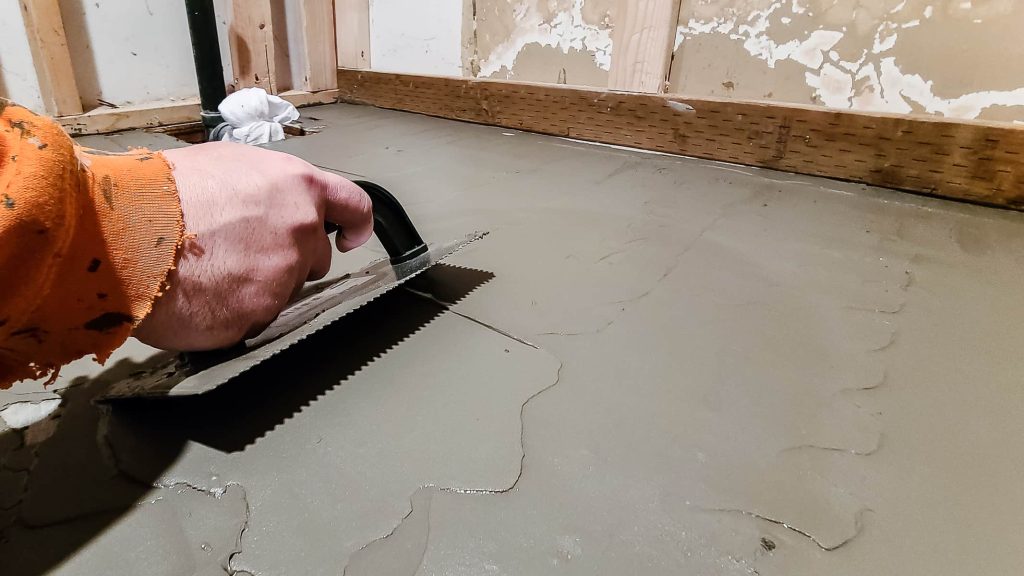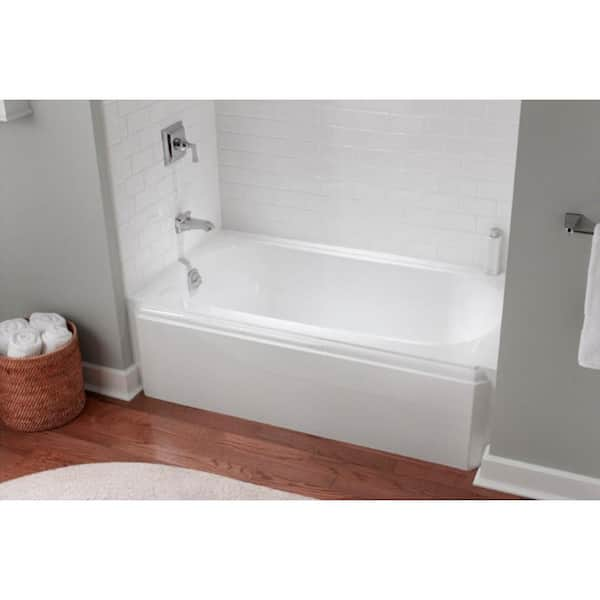We've encountered the article about How to Install a Bathtub down the page on the web and concluded it made good sense to discuss it with you here.

Mounting a bath tub isn't exactly rocket science, but it does need solid plumbing, carpentry, as well as in some cases, tiling skills. Replacing an old bathtub with a new one is likewise a moderately tough job. If the old bathtub is conveniently easily accessible, the job can move quickly; if you have to open a wall surface to get rid of the old bathtub as well as position the new bathtub, the task is much harder. In either situation, the task is within a house handyman's skills, although you will need an assistant to vacate the old bathtub as well as set in the brand-new one. See to it you have actually certified yourself for the work and also are comfortable attempting it. Rather than working with a specialist to take over a halfway-completed project, it is far better to think about utilizing one prior to you start. Opportunities are you might need a professional plumber to make tube connections.
This write-up will certainly assist you set up a new bathtub in your bathroom if you have already acquired a brand-new tub and don't require to alter the plan of your previous supply of water pipes.
Your devices as well as material checklist should consist of the following:
Preparing for the Installment
Firstly, the sustaining framework supplied with the bathroom must be fitted (if needed) according to the manufacturer's guidelines. Next, fit the taps or mixer to the bath tub. When fitting the tap block, it is important to see to it that if the tap features a plastic washer, it is fitted in between the bath and also the taps. On a plastic bathroom, it is also practical to fit a supporting plate under the faucets device to prevent stress on the bath tub.
Fit the versatile faucet ports to the bottom of both taps utilizing 2 nuts and olives (often provided with the tub). Fit the plug-hole electrical outlet by smearing mastic filler round the sink electrical outlet hole, and then pass the electrical outlet through the hole in the bathroom. Use the nut provided by the producer to fit the plug-hole. Check out the plug-hole outlet for an inlet on the side for the overflow pipeline.
Next, fit completion of the flexible overflow pipe to the overflow electrical outlet. After that, screw the pipeline to the overflow face which should be fitted inside the bathroom. Make sure you utilize every one of the supplied washing machines.
Connect the catch to the bottom of the waste outlet on the bathtub by winding the thread of the waste outlet with silicone mastic or PTFE tape, and also screw on the trap to the electrical outlet. Connect the bottom of the overflow tube in a comparable manner.The bath must currently be ready to be suited its final position.
Removing Old Taps
If you require to replace old taps with brand-new ones as a part of your installation, after that the first thing you need to do is disconnect the water system. After doing so, activate the taps to drain pipes any kind of water continuing to be in the system. The procedure of removing the existing taps can be rather troublesome as a result of the limited access that is frequently the situation.
Utilize a container wrench (crowsfoot spanner) or a faucet tool to undo the nut that links the supply pipelines to the faucets. Have a towel all set for the remaining water that will come from the pipes. When the supply pipelines have actually been gotten rid of, utilize the exact same device to loosen up the nut that holds the faucets onto the bath/basin. You will certainly require to quit the solitary faucets from transforming throughout this procedure. As soon as the faucets have been removed, the holes in the bath/basin will have to be cleaned up of any type of old securing substance.
Before moving on to fit the new taps, compare the pipe links on the old taps to the new faucets. If the old faucets are longer than the brand-new faucets, after that a shank adapter is needed for the new taps to fit.
Installing the Tub
Utilizing both wood boards under its feet, place the tub in the needed setting. The wood boards are practical in equally spreading out the weight of the bath tub over the location of the boards as opposed to focusing all the weight onto four small points.
The following objective is to make certain that the bath tub is leveled all round. This can be attained by examining the level and also readjusting the feet on the bath tub till the level reviews degree.
To mount taps, fit all-time low of the outermost versatile tap connector to the appropriate supply pipeline by making a compression sign up with; then do the same for the other faucet.
Turn on the supply of water and also check all joints and also brand-new pipework for leaks and tighten them if necessary. Load the tub and also examine the overflow electrical outlet and the normal outlet for leaks.
Ultimately, take care of the bath paneling as defined in the maker's instruction manual. Tiling and securing around the tub should wait till the tub has been made use of at the very least when as this will settle it right into its last position.
Suitable New Touches
If the tails of the new taps are plastic, after that you will certainly need a plastic port to prevent damages to the thread. One end of the adapter fits on the plastic tail of the tap and also the various other end provides a link to the existing supply pipelines.
If you require to fit a monobloc, then you will certainly call for decreasing couplers, which attaches the 10mm pipe of the monobloc to the standard 15mm supply pipeline.
Next, place the tap in the placing hole in the bath/basin making certain that the washers remain in location between the faucet as well as the sink. Safeguard the tap in position with the producer provided backnut. When the faucet is safely in position, the supply pipes can be attached to the tails of the taps. The taps can either be linked by utilizing corrugated copper piping or with normal faucet ports. The previous kind should be attached to the tap finishes first, tightening up only by hand. The supply pipelines can later on be connected to the other end. Tighten up both ends with a spanner after both ends have been linked.
Tiling Around the Bathtub
In the area where the bathroom meets the ceramic tile, it is necessary to seal the accompanies a silicone rubber caulking. This is important as the installation can move sufficient to fracture a rigid seal, triggering the water to pass through the wall in between the bathroom and the tiling, causing difficulties with dampness as well as possible leakages to the ceiling listed below.
You can choose from a range of coloured sealers to blend in your fixtures as well as installations. They are sold in tubes and cartridges, as well as can sealing gaps up to a size of 3mm (1/8 inch). If you have a larger space to load, you can fill it with spins of drenched paper or soft rope. Remember to constantly load the bathtub with water prior to securing, to enable the motion experienced when the bathtub is in use. The sealer can fracture fairly very early if you do not think about this movement before securing.
Conversely, ceramic coving or quadrant tiles can be made use of to edge the bath or shower tray. Plastic strips of coving, which are easy to use as well as reduce to dimension, are also quickly offered on the marketplace. It is advisable to fit the ceramic tiles utilizing waterproof or waterproof adhesive and cement.
Bathtub Installation
How Important Is A Bathtub To Your Home?
High-quality baths, showers, and other bathroom updates are necessary when considering a smart investment in your home. It’s a room that you go to every day and one that is constantly being used by guests.The bathroom is one of the top trafficked rooms in a home and also one of the most valuable in terms of home resale.
Install Piping Before Tub
You will be using your existing drain and waste vent system, but pipes required include the hot and cold water supply lines and a pipe leading to a shower head. A mixing valve and shower head are also needed. Air chambers may be required.
Position the Tub
Lower the tub into place so that the continuous flange fits against the wall studs and rests on 1’x4' or 2’x4' supports. Anchor the tub to the enclosure with nails or screws inserted through the flanges into the studs.
NOTE: Remember, bathtubs and shower stalls may require support framing. A bathtub filled with water is extremely heavy, so check building codes and framing support before installing the tub.
Assemble Drain Connections
Assemble the bathtub drain connections by connecting the tub overflow with the tub drain above the trap, not beyond it. The trap will have a compression fitting that screws over the arm of the overflow assembly.
Place a Pipe For the Shower Head
First, locate a brass female threaded winged fitting and attach it to a framing support via a screw or a nail. Then run a pipe up the wall for the shower head. Sweat or solder the other side of the brass fitting to the top of the pipe.
Attaching Hot and Cold Water Lines
Attach your water lines for both hot and cold by sweating these directly into the hot and cold ports of the mixing valve. The mixing valve will be how water enters the tub’s system, not by the pipes themselves.
Install the Spout
Extend a piece of 1/2 inch pipe, or whichever length is specified in the manufacturer’s instructions, for the tub spout. Sweat on a male threaded fitting at the end of the pipe or use a brass nipple of the proper length and a 1/2 inch cap.
NOTE: At this point you should have your rough-in plumbing work inspected before proceeding further.
Check For Leaks
Restore the water pressure and check the drain connection and the supply pipes for any sign of leaking.
estore the Bathroom Wall
Replace the wall with moisture-resistant drywall as a base for your wall covering. Seal the joints between the wall and your new tub with silicone caulk as protection against water seepage.
https://www.berkeys.com/2016/12/02/bathtub-installation-dallas/

Hopefully you liked our topic about How to Install a Bathtub Yourself. Thanks for finding the time to read through our article post. Feel free to take the opportunity to distribute this post if you liked it. Thanks so much for taking the time to read it.
Book Your Installation